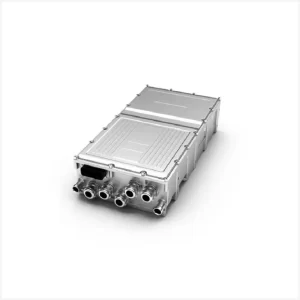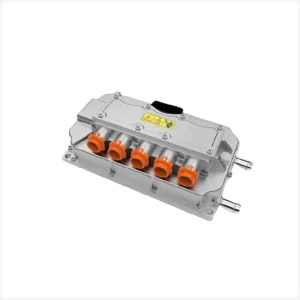The rise of Electric Vehicles (EVs) has been one of the most transformative trends in the automotive industry in recent years. As countries push toward more sustainable transportation options and the need for cleaner energy grows, EVs have become the front-runners in shaping the future of mobility. Central to the efficient operation of EVs is the motor controller, which is crucial for managing the vehicle’s electric motor and battery. In this article, we will explore the fundamentals of electric vehicle motor controllers, their components, and their role in modern EV systems.
What is an Electric Vehicle Motor Controller?
At its core, an electric vehicle motor controller Unit (EV MCU) is an electronic device that regulates the flow of electricity to the motor in an EV. It converts the DC (Direct Current) power stored in the vehicle’s battery into AC (Alternating Current) that powers the motor. This process is essential for the functioning of EVs, as it directly impacts the vehicle’s acceleration, speed, torque, and overall performance.
In addition to controlling the motor’s power, motor controllers also manage regenerative braking systems, vehicle dynamics, and safety features. They act as the interface between the vehicle’s sensors, the battery, and the motor, ensuring efficient and smooth operation of the entire system.
How Does a Motor Controller Work?
The motor controller serves as the brain of the powertrain system. It receives commands from various inputs, including the throttle, brake, and forward/reverse switches via CAN Bus. Based on these inputs, it adjusts the energy flow between the motor and battery, controlling the vehicle’s speed and torque output in real-time.
The controller works as follows:
- Power Conversion:The controller receives DC voltage from the battery and converts it into AC voltage, which powers the motor. This conversion process is crucial for maintaining efficiency and performance.
- Regenerative Braking:When the vehicle decelerates or brakes, the motor can act as a generator, converting kinetic energy back into electrical energy. The motor controller manages this process, sending the energy back to the battery, improving efficiency and extending the vehicle’s range.
- Torque Control:The controller uses algorithms to precisely regulate the speed and torque of the motor, ensuring smooth and responsive acceleration and braking. This control is essential for achieving optimal performance and energy efficiency.
- Monitoring and Protection:The motor controller constantly monitors various parameters like battery voltage, current, motor speed, and temperature. If any abnormal readings are detected, the controller will activate protective measures to prevent damage to the system.

Key Components of a Motor Controller
Electric vehicle motor controllers are composed of several key components that work in tandem to ensure efficient motor control. These include:
- Power Electronics:The power electronics section of the controller is responsible for converting DC to AC, as well as managing the flow of electricity to and from the motor. This section is typically made up of components like IGBTs (Insulated Gate Bipolar Transistors), and other semiconductor devices that handle high-power operations.
- Microprocessor/Embedded Systems:The microprocessor serves as the control unit for the motor controller. It processes inputs from the vehicle’s sensors and adjusts the power output to the motor accordingly. It also communicates with the vehicle’s onboard diagnostic systems, providing real-time data on the vehicle’s status and performance.
- Regenerative Braking Systems:The regenerative braking feature allows the motor to generate electricity when the vehicle slows down, sending the energy back to the battery. This system is managed by the motor controller, which ensures that the energy is stored efficiently.
- Communication Interface:Motor controllers are increasingly equipped with communication interfaces that allow them to interact with external systems, such as autonomous driving systems or smart mobility services. This makes EVs more adaptable for shared and autonomous transportation solutions.
- Sensors and Protection Systems:A set of sensors continuously monitors key parameters like battery voltage, motor speed, and current flow. The motor controller uses this data to regulate the motor’s performance and protect the system from malfunctions, ensuring the safety and reliability of the vehicle.
Challenges in Motor Controller Design
- Power Density and Efficiency
High power density, which refers to the power output per unit of volume, is crucial in electric vehicles and industrial applications where space is limited. Engineers face the challenge of optimizing controllers to handle more power in a smaller footprint without sacrificing efficiency. Achieving high efficiency requires minimizing heat loss and improving switching components, such as using advanced silicon carbide (SiC) or gallium nitride (GaN) materials. - Thermal Management
With increased power density comes the issue of heat dissipation. Motor controllers generate significant heat, which, if not managed properly, can impact performance and lifespan. Integrating effective thermal management techniques, such as improved cooling systems, heat sinks, and advanced thermal materials, is essential for reliable operation under high-load conditions. - High-Speed, Precision Control
Motor controllers for applications like robotics and electric vehicles require high-speed, precise control of torque and speed. Achieving this involves accurate real-time processing and efficient feedback mechanisms. Complex algorithms, such as Field-Oriented Control (FOC) for vector control, allow controllers to meet these requirements. However, implementing these algorithms without overloading the controller’s processing capacity remains a significant challenge. - Handling of Wide Voltage and Current Ranges
Controllers in industrial or automotive applications often operate under a wide range of voltage and current inputs. Designing controllers that can handle this variability without impacting stability or efficiency requires robust, adaptive control strategies, and durable components that can withstand these conditions over extended periods. - Noise and Electromagnetic Interference (EMI)
As motor controllers switch at high frequencies, they can generate EMI, which affects other nearby electronic components. Suppressing this noise without sacrificing performance is challenging, particularly in applications that require high power and fast switching speeds. - Cost-Effectiveness
Balancing high performance with affordability is a continual struggle. Industries, especially consumer-oriented sectors, require motor controllers that are not only efficient and powerful but also cost-effective to produce. This challenge necessitates innovations in materials and manufacturing processes that can reduce costs without compromising quality.
Motor controller design is at an exciting intersection of advancing technology and increasing demands. With these innovations, industries are seeing controllers that are not only more capable and reliable but also more adaptable to the diverse needs of modern applications.

The Future of EV Motor Controllers
The future of motor controllers in electric vehicles looks promising, with ongoing research and development focused on improving their performance and efficiency. Emerging technologies like wide-bandgap semiconductors (e.g., SiC and GaN) are expected to enhance the power conversion process, making EVs more efficient and cost-effective. Additionally, as EVs become more connected and autonomous, motor controllers will need to evolve to support real-time communication and integration with other vehicle systems.
As the electric vehicle market continues to grow, so too will the demand for more advanced motor controllers. These systems will play a pivotal role in shaping the future of mobility, providing the foundation for cleaner, safer, and more efficient transportation options worldwide.
Conclusion
Electric vehicle motor controllers are at the heart of the electric vehicle revolution, enabling the efficient conversion of electrical energy into motion. With advancements in power electronics, embedded systems, and control algorithms, motor controllers are becoming increasingly sophisticated, improving the performance, range, and safety of EVs. As the world shifts toward sustainable transportation, the role of motor controllers will be crucial in ensuring the continued success and growth of electric vehicles in the coming years.
At GTAKE, we specialize in advanced motor control solutions for the electric vehicle industry. With our expertise in low-voltage AC drives and motor controllers, we provide tailored solutions to meet your unique needs.
Get in touch with GTAKE today and let us power your next innovation.
